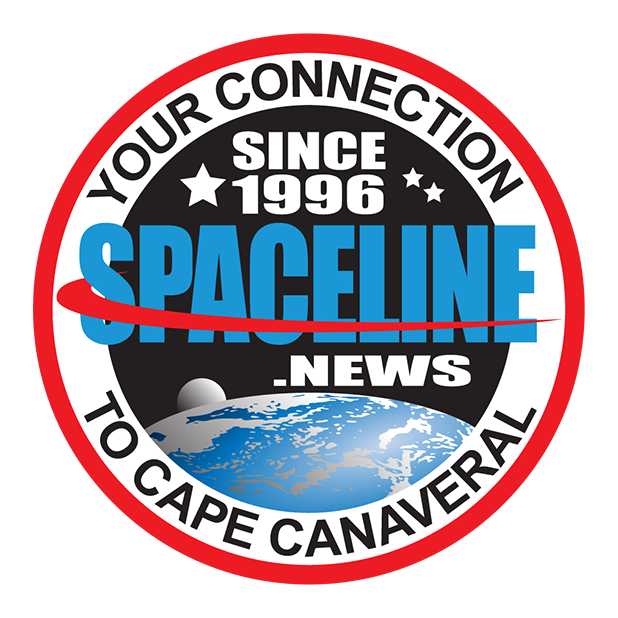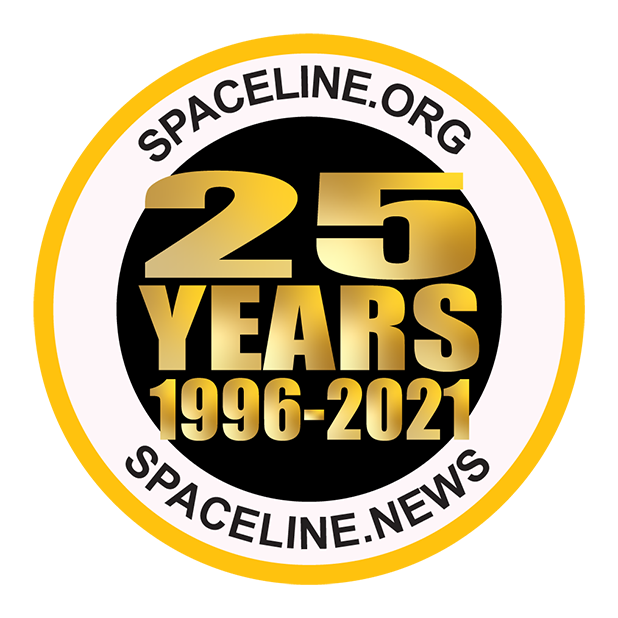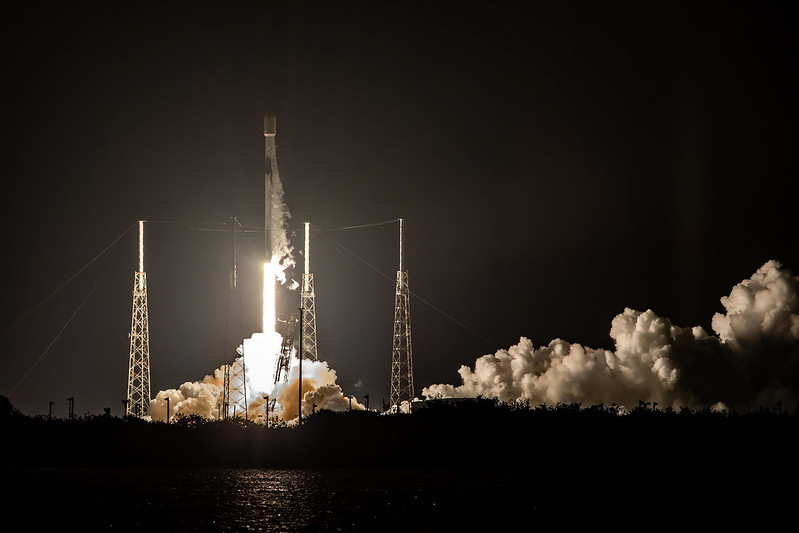
Falcon 9 Starlink 4-12 Launch, Photo Courtesy SpaceX
Falcon 9 Launches 53 Starlink Satellites
March 19, 2022 | Reported by Cliff Lethbridge
A SpaceX Falcon 9 rocket successfully launched 53 Starlink satellites at 12:42 a.m. EDT today from Launch Pad 40 on Cape Canaveral Space Force Station. Launch was originally set for 11:23 p.m. EDT on March 18, 2022 but was postponed due to expected bad weather at the launch site. The first stage booster employed today was being flown for the 12th time, establishing a new record for the boosters, after previously supporting the DM-2, RADARSAT, SXM-7 and eight Starlink missions. The booster was successfully recovered today with a landing on the "Just Read the Instructions" autonomous drone ship positioned on the Atlantic Ocean about 400 miles northeast of Cape Canaveral. The mission, designated Starlink 4-12, carried 53 Starlink broadband Internet satellites, which were successfully deployed about 59 minutes after launch. This brings to a total of 2,335 Starlink satellites launched to date, although not all of these are operational or still in orbit. Starlink is a SpaceX-owned and operated constellation of broadband Internet satellites intended to provide space-based Internet service to unserved or underserved areas. Starlink currently serves about 150,000 users in over 25 countries and regions throughout the world.
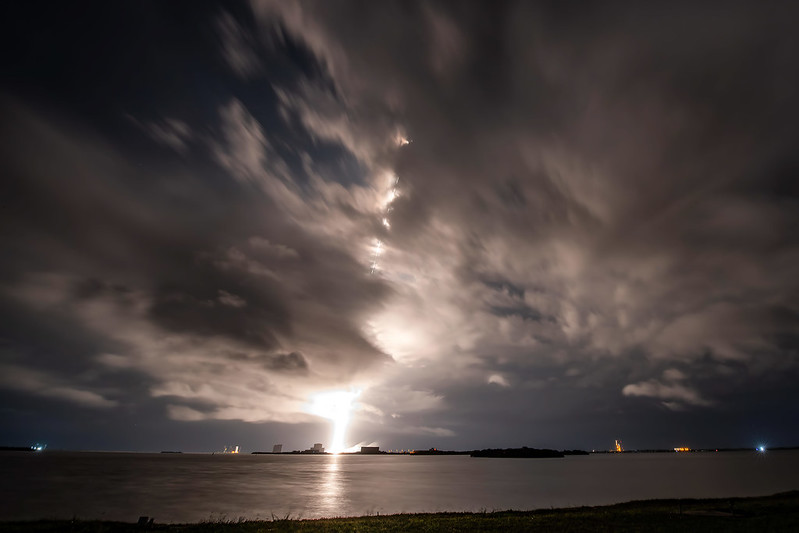
Falcon 9 Starlink 4-12 Streak Shot, Photo Courtesy SpaceX
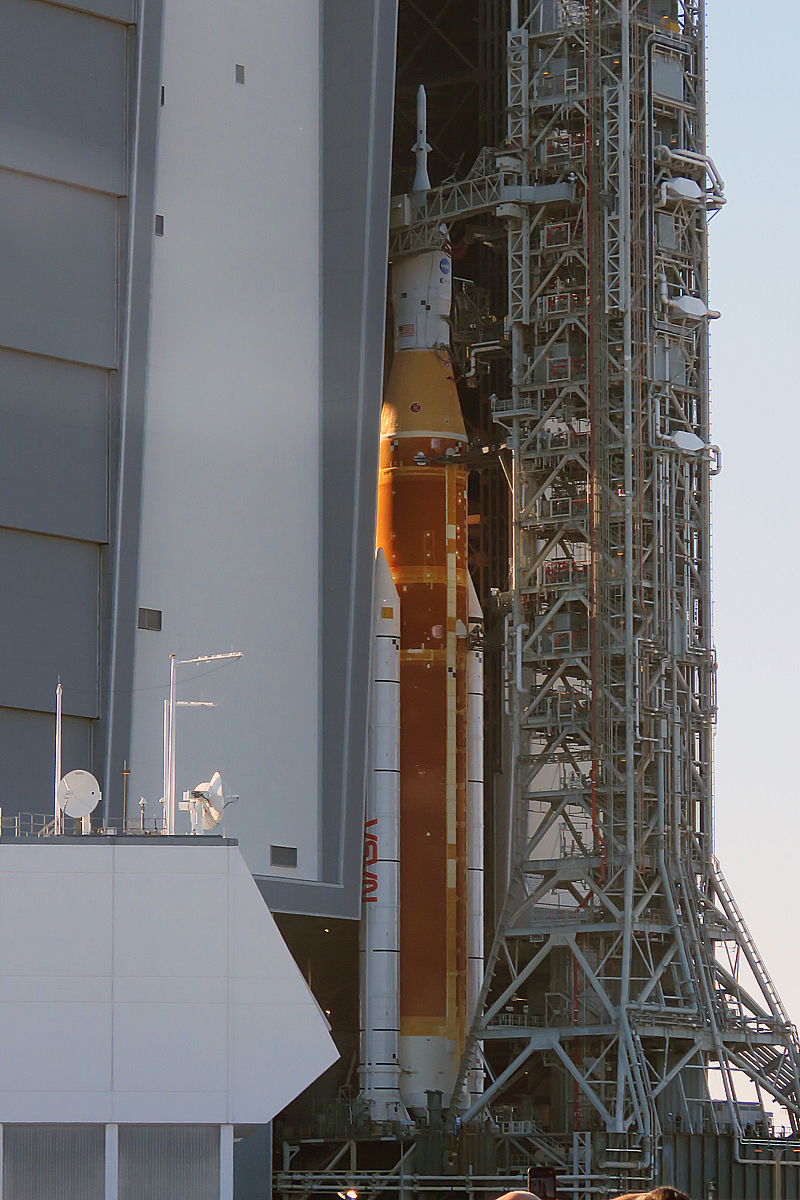
SLS Rollout, Photo Courtesy Carleton Bailie/Spaceline
Mega Moon Rocket Completes Rollout To Launch Pad 39B
March 18, 2022 | Reported by Cliff Lethbridge
NASA's Mega Moon Rocket, the Space Launch System (SLS) to be launched on the Artemis-1 mission, completed its 4.2-mile rollout from High Bay 3 in the Vehicle Assembly Building (VAB) to Launch Pad 39B at 4:15 a.m. EDT today. The SLS sat atop its Mobile Launcher Platform (MLP) carried by Crawler Transporter-2 (CT-2), a refurbished CT originally built to carry the Apollo Saturn V rockets in the 1960's. The journey, which had some planned stops along the way, began at 5:47 p.m. EDT on March 17, 2022 and took 10 hours, 28 minutes.
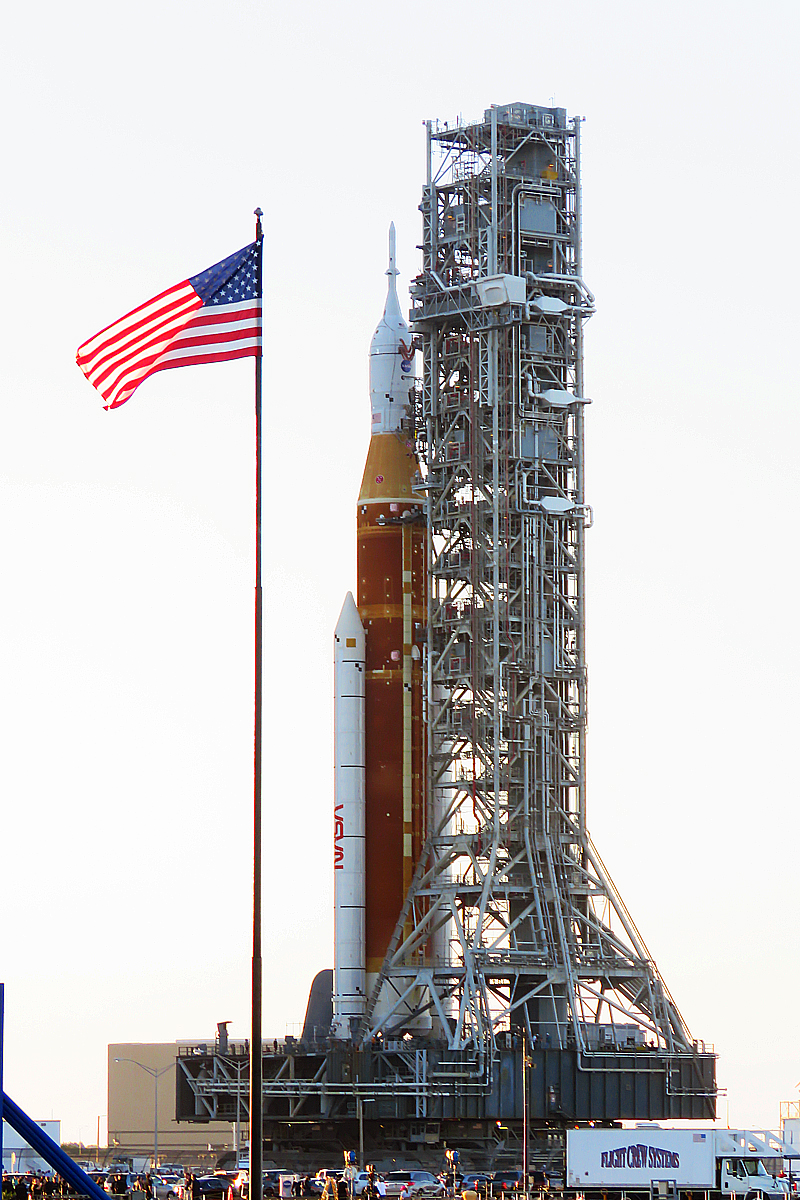
SLS Rollout, Photo Courtesy Carleton Bailie/Spaceline
The 322-foot tall, 3.5-million-pound SLS is at the pad for a wet dress rehearsal which will run the launch team through operations to load liquid oxygen and liquid hydrogen into the rocket's propellant tanks. The wet dress rehearsal will include a full launch countdown to demonstrate the ability to recycle the countdown clock, drain the tanks as well as practice the timelines and procedures the launch team will use for an actual launch. The simulated countdown is tentatively scheduled to begin on April 1, 2022 and end on April 3, 2022. If all goes well, SLS will be rolled back to the VAB for final vehicle preparations for the Artemis-1 launch on an unmanned Orion Spacecraft mission to orbit the Moon. Launch of Artemis-1 could come as early as May, 2022.
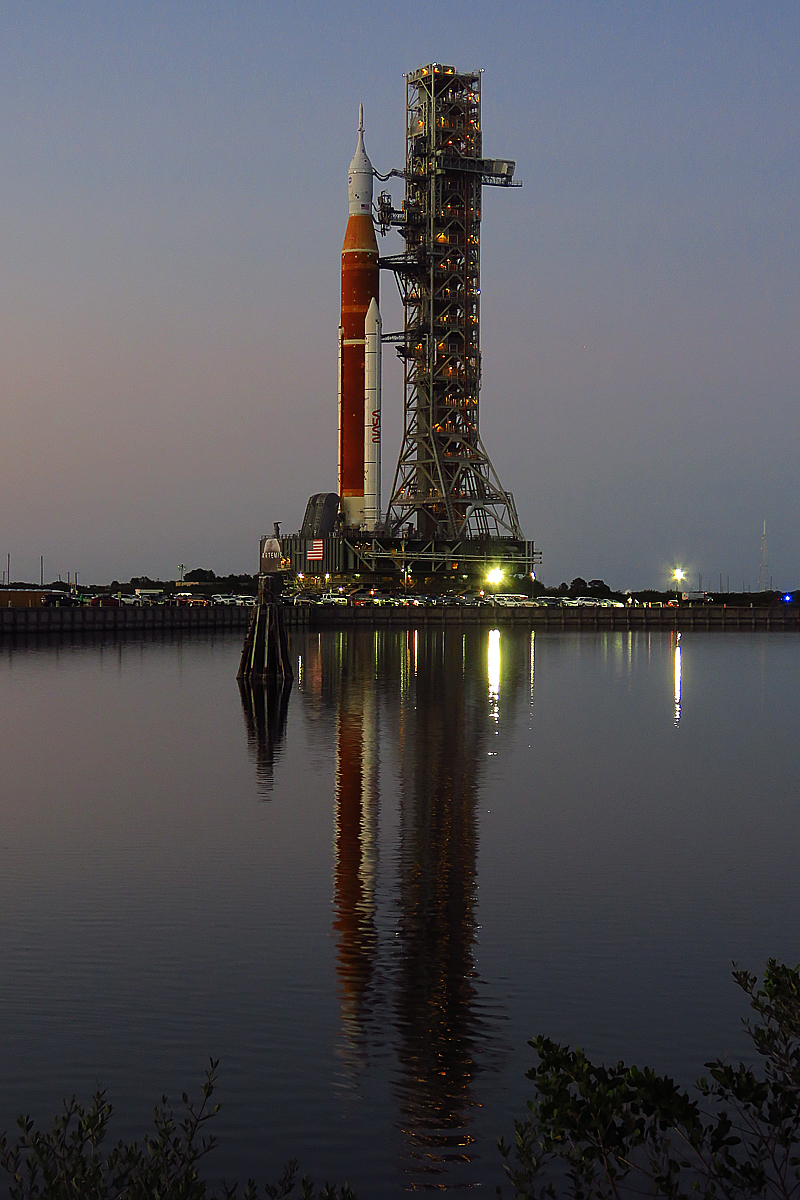
SLS Rollout, Photo Courtesy Carleton Bailie/Spaceline
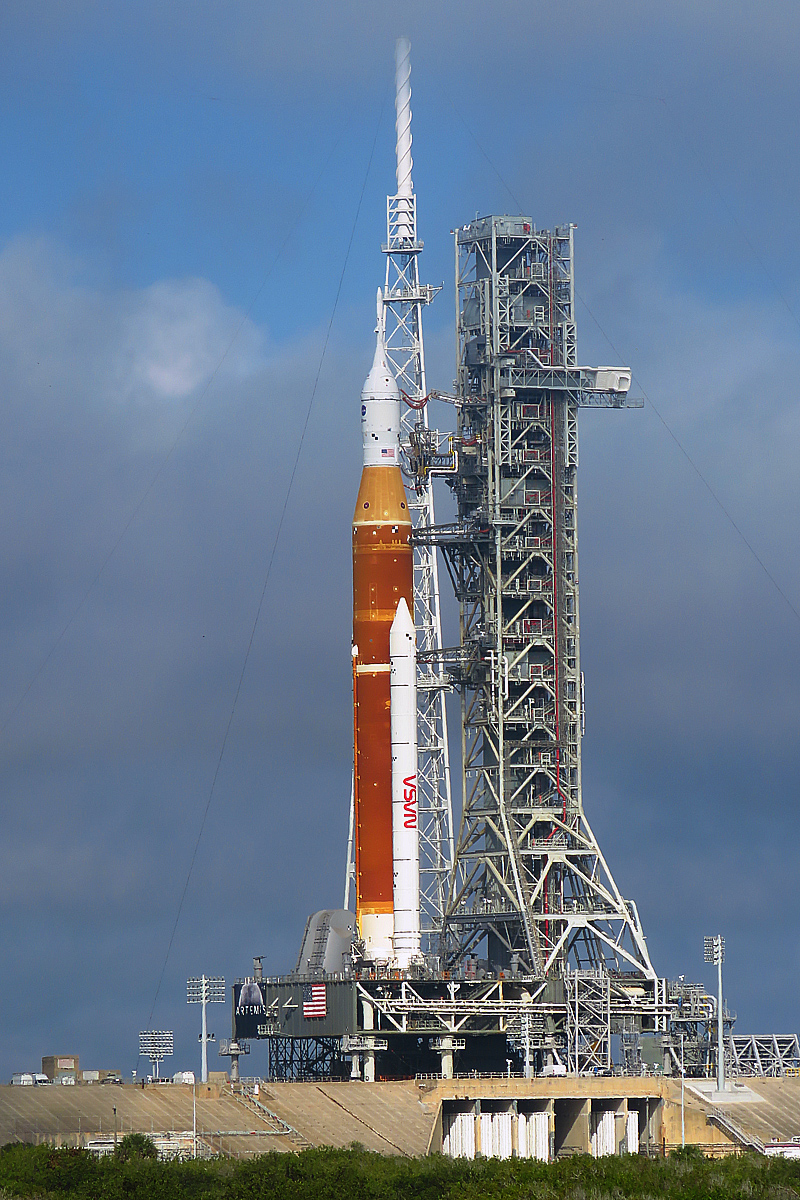
SLS On Launch Pad 39B, Photo Courtesy Carleton Bailie/Spaceline
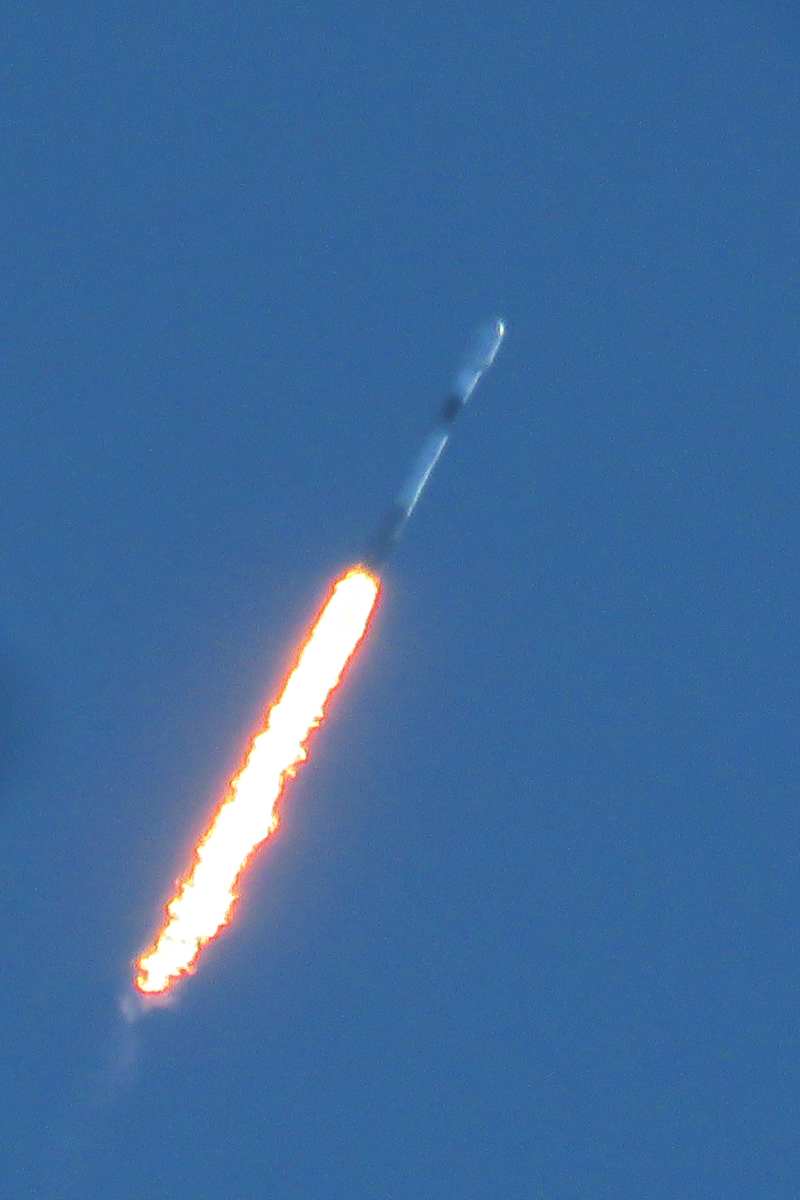
Falcon 9 Starlink 4-10 In Flight, Photo Courtesy Carleton Bailie/Spaceline
Falcon 9 Launches 48 Starlink Satellites
March 9, 2022 | Reported by Cliff Lethbridge
A SpaceX Falcon 9 rocket successfully launched 48 Starlink satellites at 8:45 a.m. EST today from Launch Pad 40 on Cape Canaveral Space Force Station. The first stage booster employed today was being launched for the fourth time, having previously supported the Arabsat-6A, STP-2 and CSG-2 missions. The booster was successfully recovered today with a landing on the "A Shortfall of Gravitas" drone ship positioned on the Atlantic Ocean near the Bahamas. The mission, designated Starlink 4-10, was the 40th dedicated launch of Starlink satellites. With the 48 Starlink satellites launched today, the total launched to date is 2,282 although not all of these are operational or still in orbit. Starlink is a SpaceX-owned and operated constellation of broadband Internet satellites designed to bring space-based Internet service to unserved or underserved communities throughout the world. The network currently serves about 150,000 users in over 25 countries.
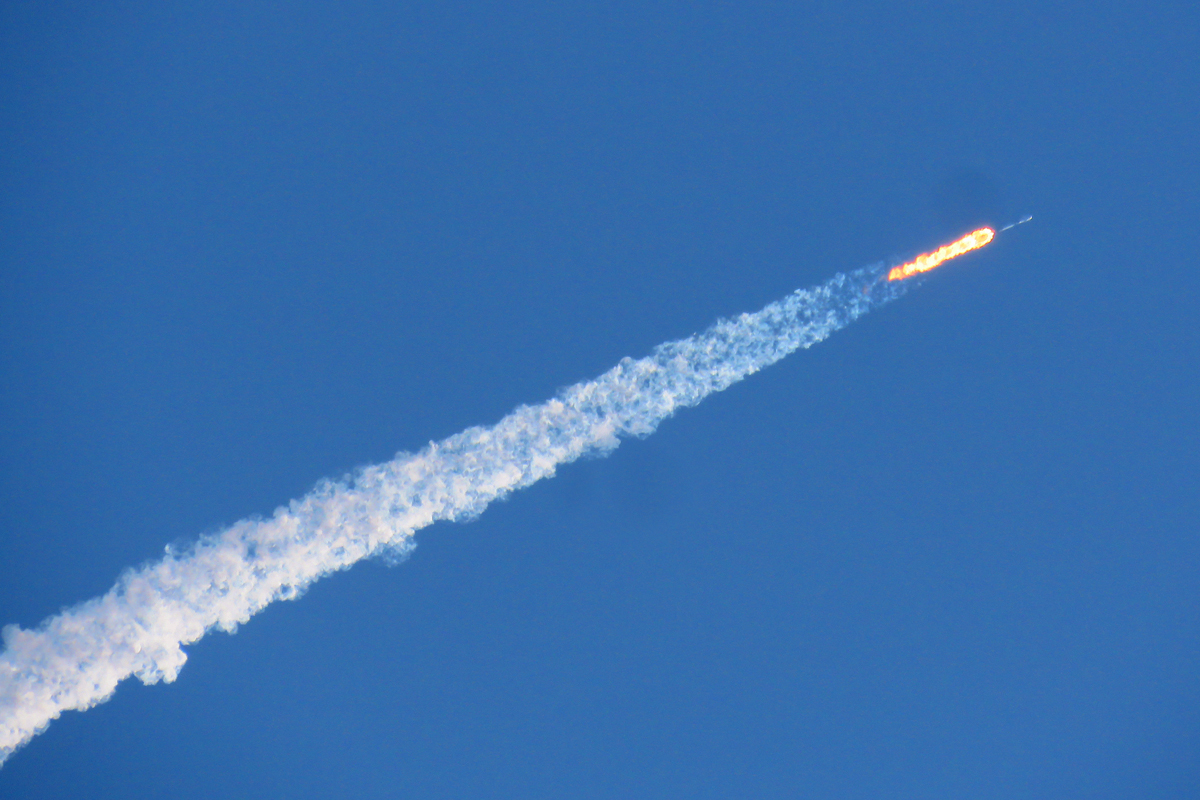
Falcon 9 Starlink 4-10 Downrange, Photo Courtesy Carleton Bailie/Spaceline
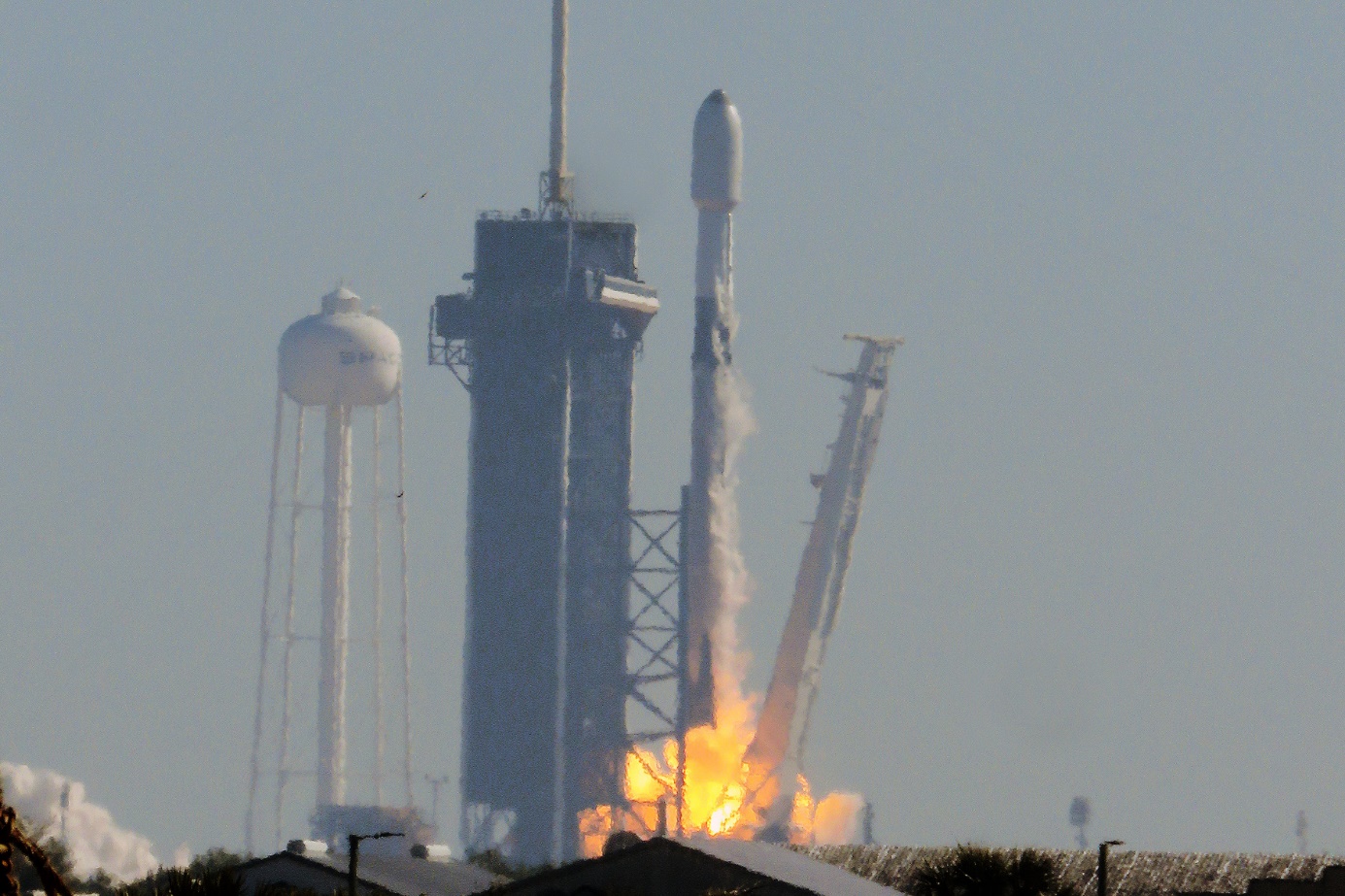
Falcon 9 Starlink 4-9 Launch, Photo Courtesy Carleton Bailie/Spaceline
Falcon 9 Launches 47 Starlink Satellites
March 3, 2022 | Reported by Cliff Lethbridge
A SpaceX Falcon 9 rocket successfully launched 47 Starlink broadband Internet satellites at 9:25 a.m. EST today from Launch Pad 39A at the Kennedy Space Center. The first stage booster employed today was being flown for the eleventh time, having previously supported the GPS III-SV03, Turksat-5A, Transporter-2 and seven Starlink missions. The booster was successfully recovered today with a landing on the "Just Read the Instructions" drone ship positioned on the Atlantic Ocean near the Bahamas. The mission, designated Starlink 4-9, deployed 47 Starlink broadband Internet satellites. This brings to a total of 2,234 Starlink satellites launched to date, although not all of these are still operational or still in orbit. Starlink is a SpaceX-owned and operated constellation which currently provides space-based Internet service to about 150,000 users in more than 25 countries and regions throughout the world. SpaceX hopes to launch a total of 42,000 Starlink satellites into low-Earth orbit in the coming decades.
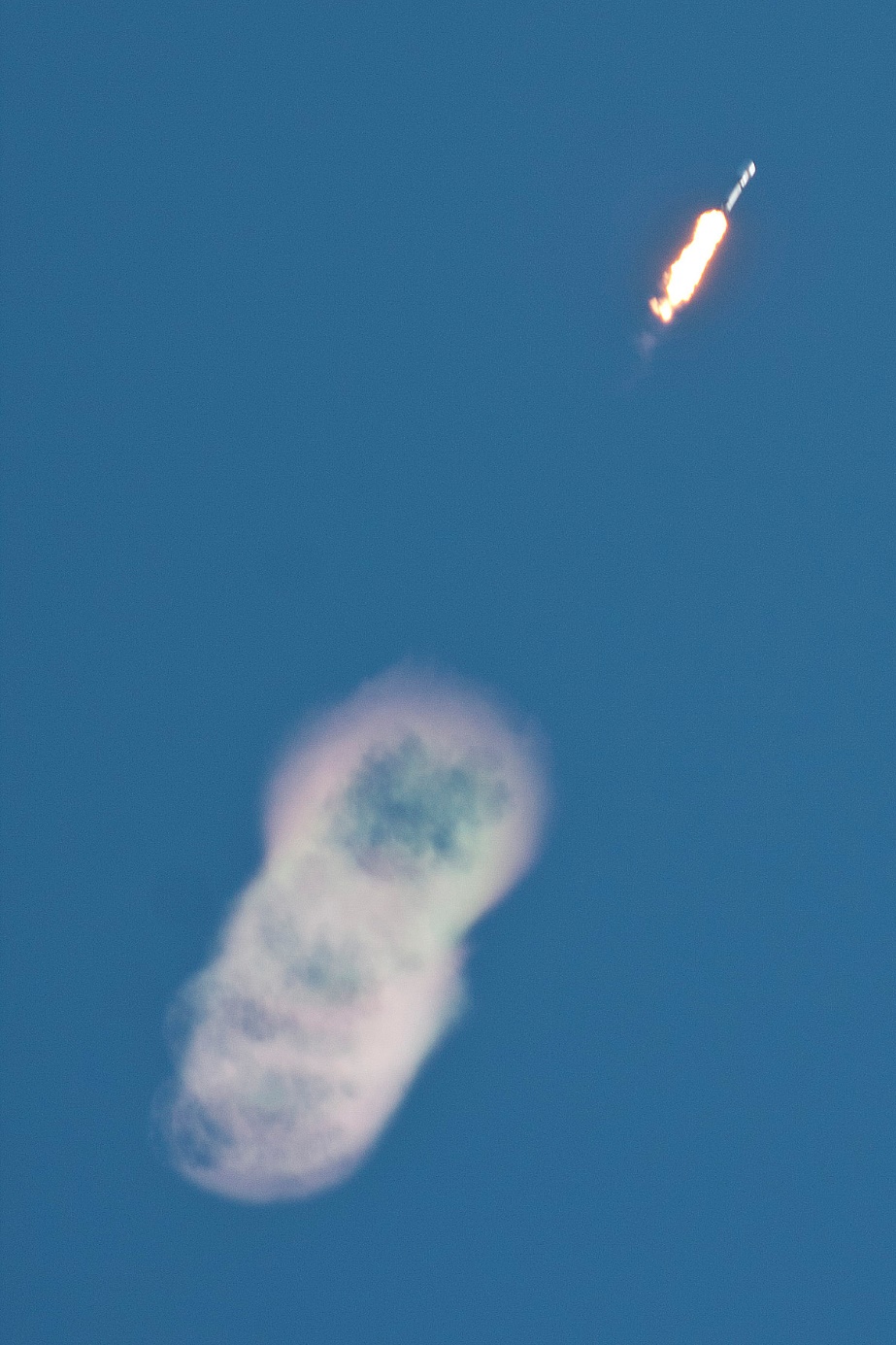
Falcon 9 Starlink 4-9 Downrange, Photo Courtesy Carleton Bailie/Spaceline
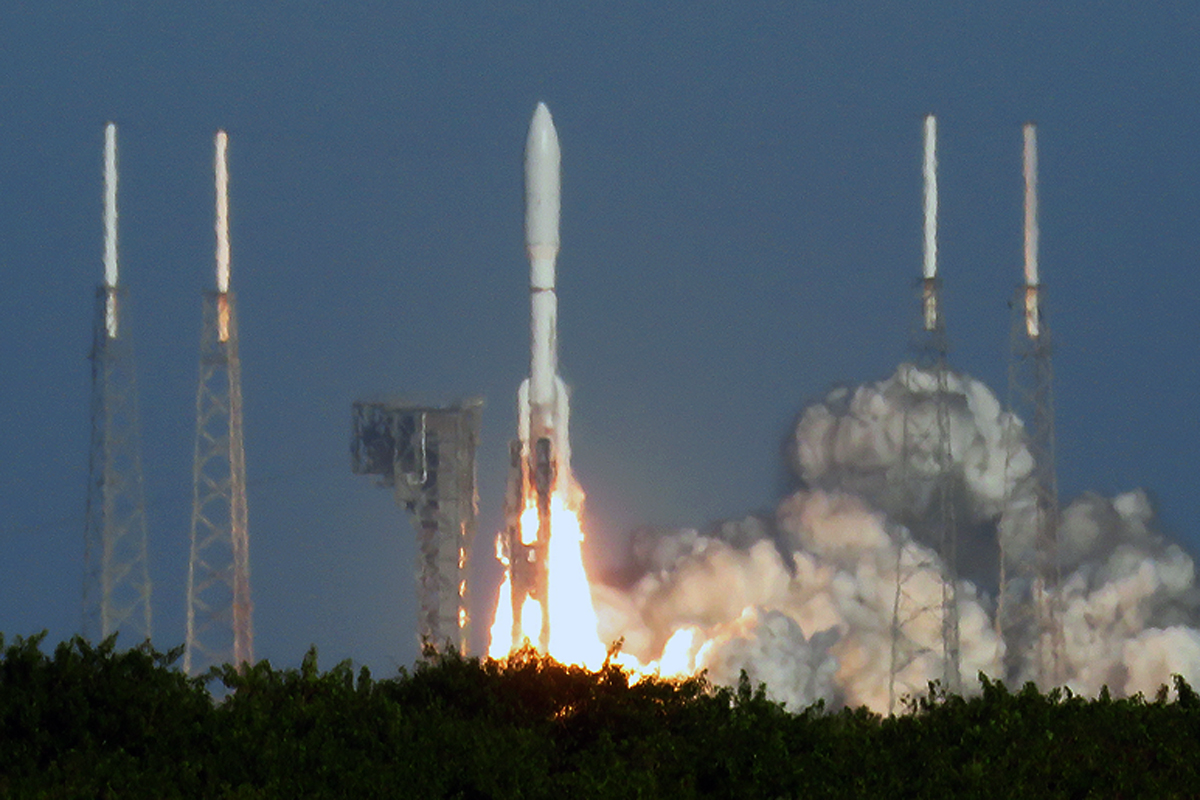
Atlas V GOES-T Launch, Photo Courtesy Carleton Bailie/Spaceline
Atlas V Launches Weather Satellite
March 1, 2022 | Reported by Cliff Lethbridge
A United Launch Alliance Atlas V rocket successfully launched the GOES-T (Geostationary Operational Environmental Satellite-T) weather satellite at 4:38 p.m. EST today from Launch Pad 41 on Cape Canaveral Space Force Station. The rocket flew in the 541 configuration, featuring a 5-meter payload fairing, four solid rocket boosters and a single-engine Centaur second stage. The satellite was deployed on a geostationary transfer orbit about three and a half hours after launch. It will ultimately by deployed about 22,000 miles above Earth.
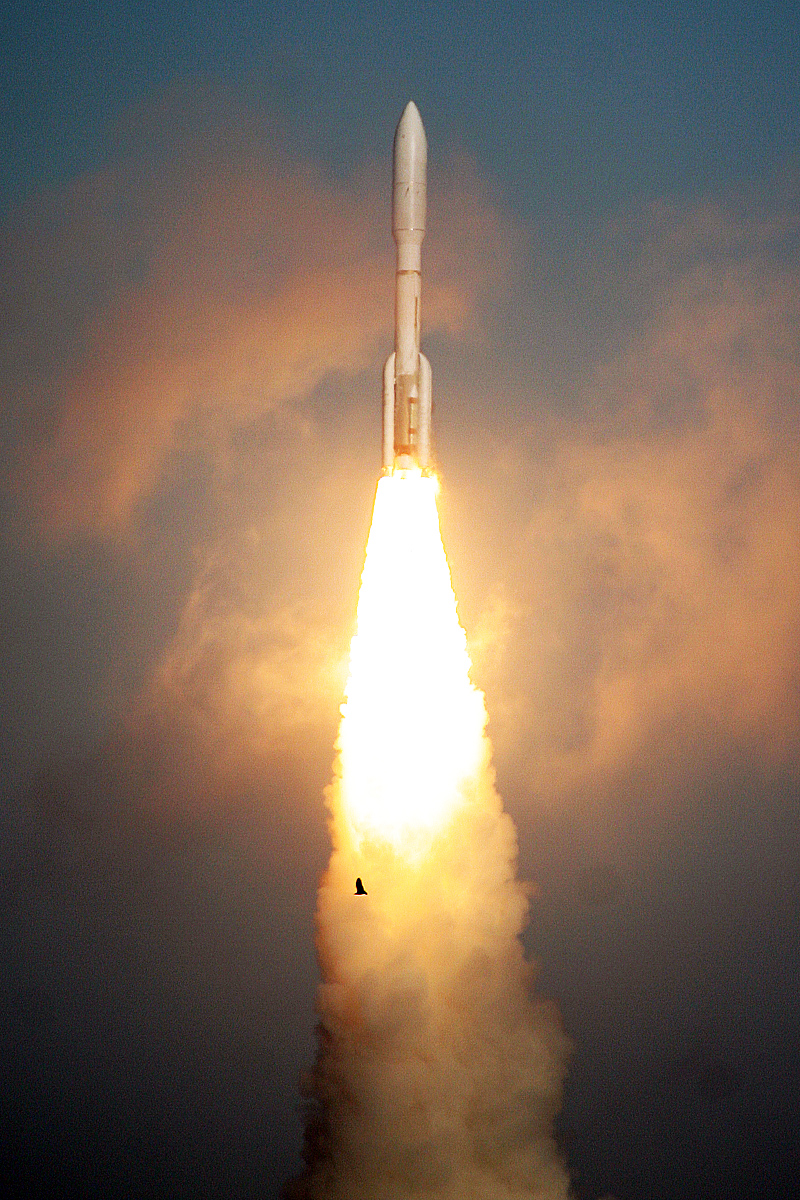
Atlas V GOES-T Launch, Photo Courtesy Carleton Bailie/Spaceline
The 11,000-pound satellite will be renamed GOES-18 upon deployment and will replace GOES-17 as the world's primary western hemisphere observing weather satellite, including the U.S. west coast and Pacific Ocean. The National Oceanic and Atmospheric Administration (NOAA) also maintains a GOES satellite which observes the eastern hemisphere. The GOES constellation is designed to provide real-time images of cloud cover, as well as rapid updates on the development of cyclones and severe weather. GOES-18 is also equipped to provide climate data and information and forecasts of space weather. The satellite has a design life of 15 years.
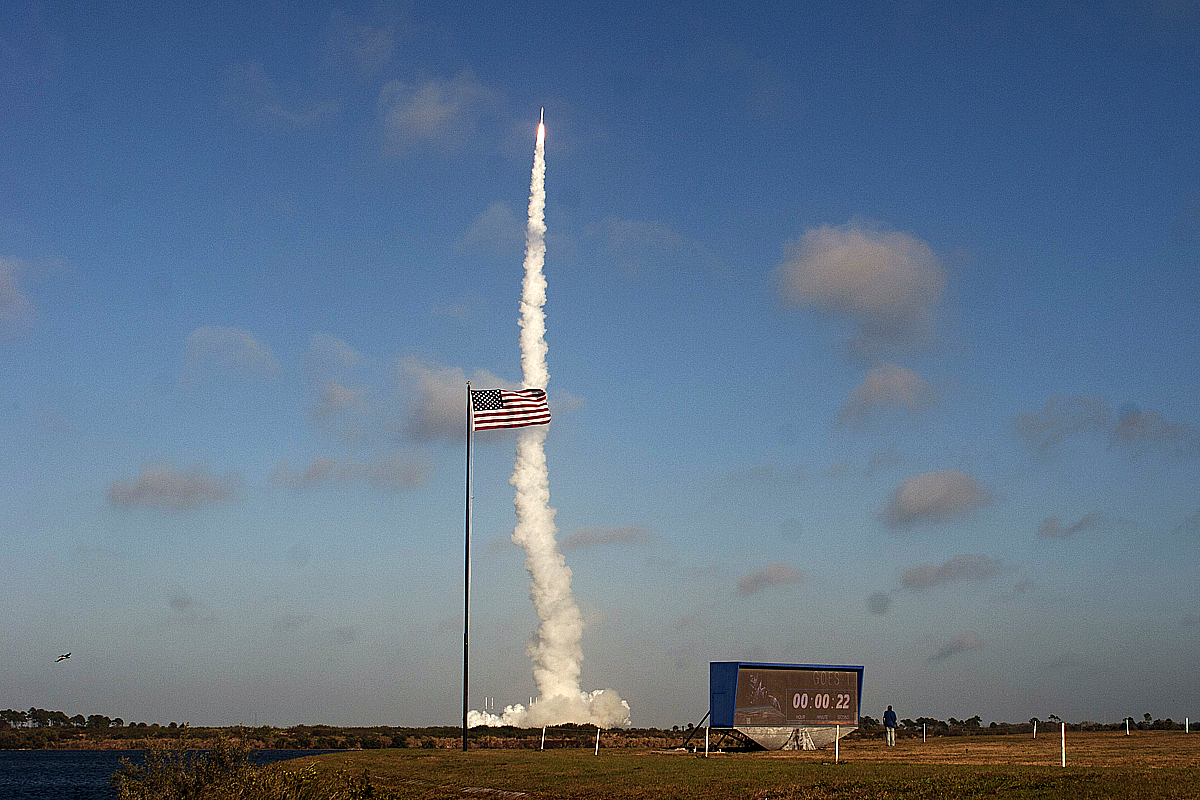
Atlas V GOES-T Launch, Photo Courtesy Carleton Bailie/Spaceline


